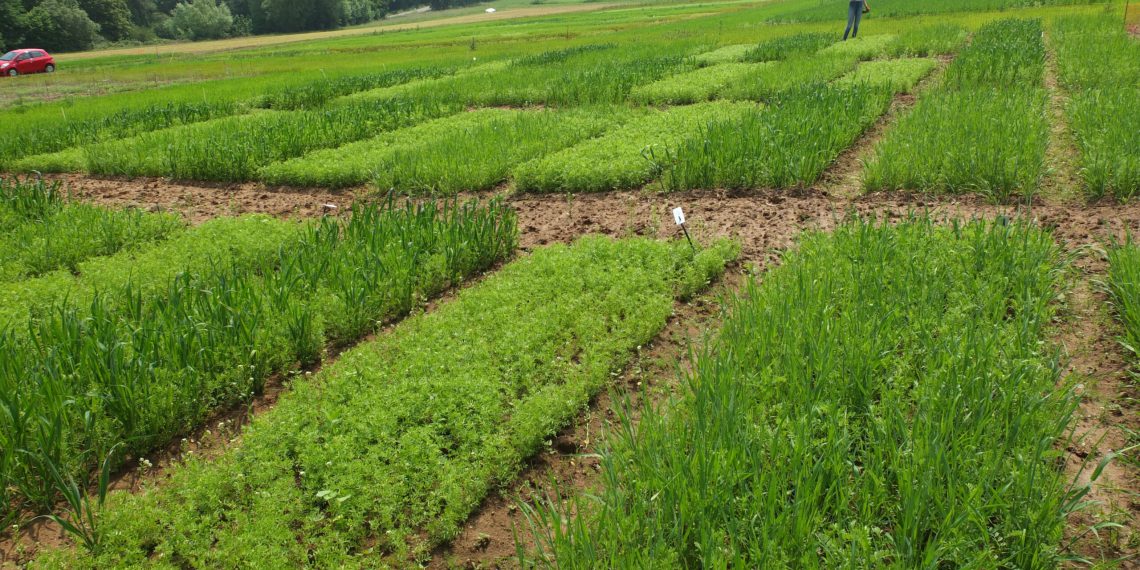The lentil is a true “superfood”. However, the old crop plant rarely grows in German fields: Too complicated to harvest, too little yield. The LinSel research group, coordinated by the Center for Organic Agriculture at the University of Hohenheim in Stuttgart, wants to change that: At the conference, it will present so-called genotypes that are suitable as precursors for varieties for domestic cultivation. Another focus is the possibilities of propagating and cultivating them in Germany.
The rediscovery of the Swabian “Albleisa” about 20 years ago gave rise to new research on the lentil. Researchers are interested in how to bring the old crop back to domestic fields in order to shorten delivery routes. To this end, they are investigating which genotypes are suitable for Central European conditions.
Together with the two departments of General Crop Production and Quality of Plant Products of the Institute of Crop Plant Sciences at the University of Hohenheim, the Leibniz Institute of Plant Genetics and Crop Plant Research (IPK) Gatersleben, the Keyserlingk Institute, and the University of Kassel, the Center for Organic Agriculture at the University of Hohenheim identified genotypes that are suitable for cultivation in Germany.
From the laboratory to the trial field and onto the field
Over three years, the research project selected suitable lentil genotypes for domestic cultivation. First, the IPK examined 110 provenances that were stored in the gene bank. The researchers analyzed which lentils are competitive and have potential for a high-yielding crop.
The selected provenances were then sent to the University of Hohenheim. Cultivation in trial fields was intended to show how the lentils develop in the field and whether the old varieties are robust enough to withstand current climate conditions.
The Keyserlingk Institute tested “on farm” on a larger field plot how competitive the lentil genotypes are, what diseases can occur and how much yield the plants produce. Technical parameters that are important for cultivation also played a role here: How well can different genotypes be harvested and how much crop remains in the end? Researchers from the Department of Ecological Agricultural Sciences at the University of Kassel investigated how the variety types adapt to different locations over several years and what factors environmental conditions, soil and climate play in this.
The harvest was returned to Hohenheim, where researchers analyzed, among other things, the protein content and the thousand-grain mass — an important parameter in the seed trade.
Old variety types offer surprising potential
“We found some genebank accessions, some of them old, that performed better in trial cultivation than regionally grown comparative varieties. These varieties offer good conditions for successful cultivation in Germany.”
- Alex Kröper
The challenge now, he says, is to get the selected lentils onto farmland. “Among farmers, lentils are still considered unattractive and difficult to harvest. Because the plant has not been cultivated in Germany for a long time, it is not adapted to our modern agricultural systems. Professional propagation is still in its infancy,” says Dr. Sabine Zikeli, coordinator of the project at the Center for Organic Agriculture. “That’s why at our conference we’re also looking for an active exchange with farmers about the propagation and marketing of native lentils.”
LinSel conference provides impetus for agricultural use
At the conference, the project partners will explain the results of the individual research steps and present the selected lentils. Further impetus will be provided by researchers from Switzerland and Canada, who have also conducted field trials with various lentil crops. Various workshops will also focus on transferring the research results into practice in domestic fields. To this end, lentil experts will share their knowledge of the entire value chain of the plant — from breeding and propagation of variety types to the benefits of producer groups and marketing.

















